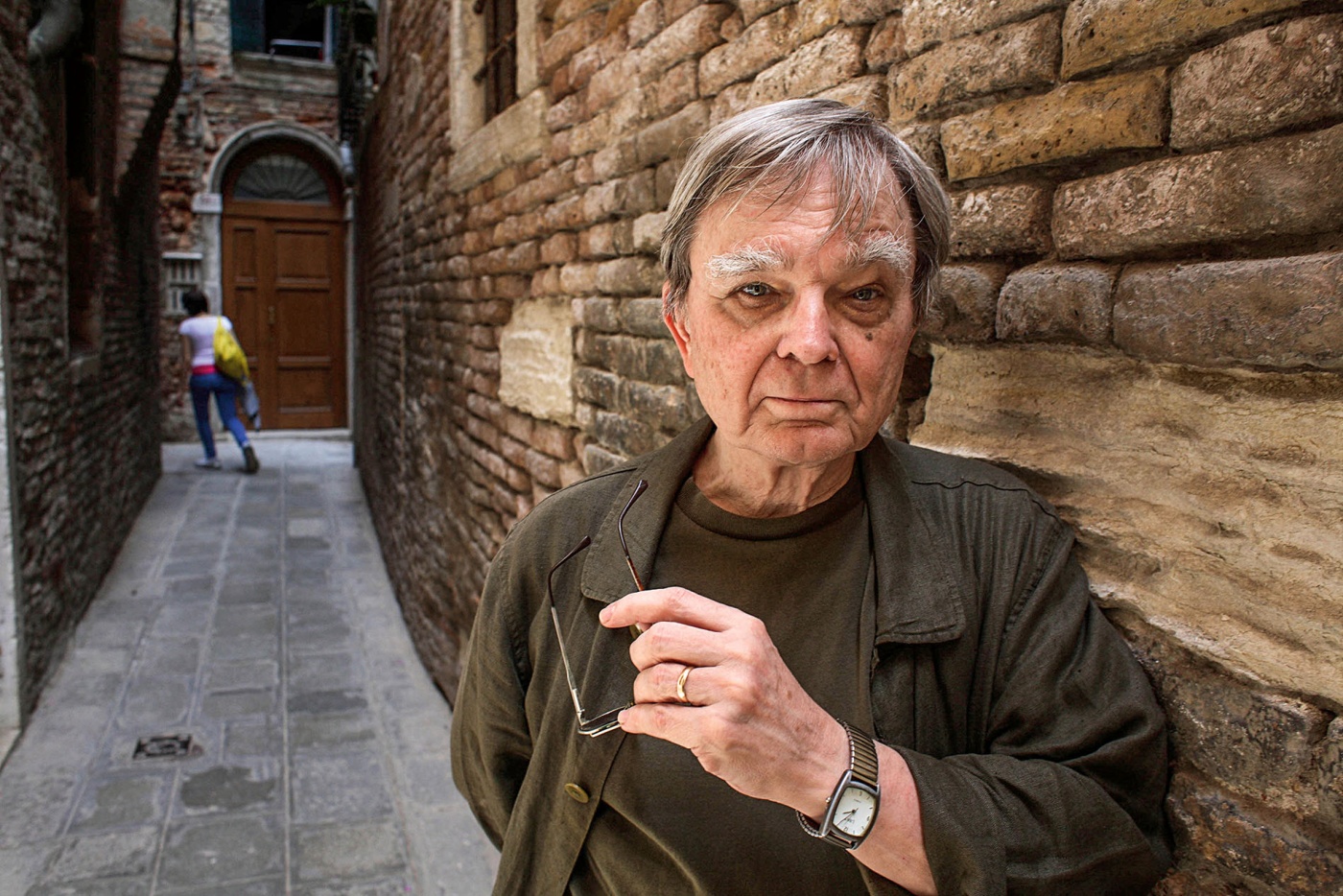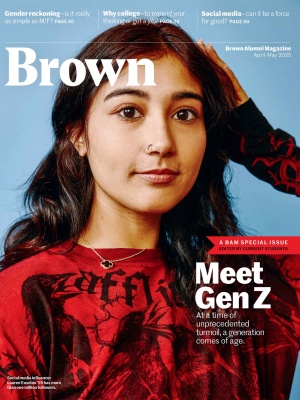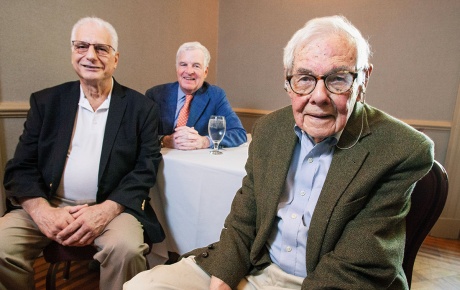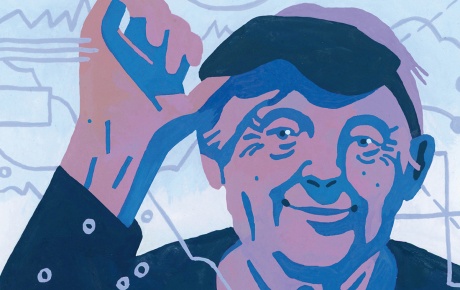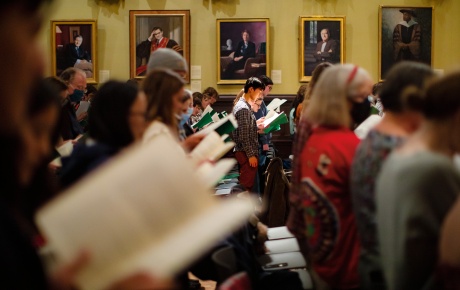The fairy tale Jack and the Beanstalk is fairly straight-forward: A poor boy climbs a beanstalk that takes him to a castle in the sky, where he steals a golden-egg-laying goose from a giant, who chases him back down the beanstalk. He cuts the stalk, the giant falls to his death, and he lives happily ever after.
But in Robert Coover’s version in Pricksongs and Descants, his landmark 1969 collection of classic fairy tales deconstructed almost beyond recognition, it begins like this: “This was the hard truth: to be Jack become the Giant, his own mansions routed by the child he was. Yes, he’d spilled his beans and climbed his own green stalk to the clouds and tipped old Humpty over, only to learn, now much later, that that was probably the way the Old Man, in his wisdom, had wanted it.”
That is but a sample of the prolific work of Coover, whose more than 20 novels and five story collections turned the idea of conventional fiction, with its linear storytelling and clear points of view, on its head and inside out. His writing exploded the Aristotelian unities of narrative, the idea that a story should occur at one time, in one place, and stick to one protagonist or narrator. To read him is to be often confounded but also set free in a world of multiple narrative possibilities, almost as though in a dream.
Coover—who not only pioneered postmodern literature with such writers as Thomas Pynchon, Donald Barthelme, and Don DeLillo, but also taught at Brown from 1979 to 2012, mentoring future writers including Sam Lipsyte ’90, Rick Moody ’83, and Alexandra Kleeman ’07—died on October 5 in a nursing home in Warwick, England, at age 92. He is survived by his wife of 65 years, the artist Pilar Sans Coover; three children; seven grandchildren; and four great-grandchildren. His best-known works, besides Pricksongs and Descants, include The Origin of The Brunists (1966) and The Public Burning (1977), which reimagined the real-life story of Julius and Ethel Rosenberg.
Coover never sought tenure at Brown, partly because he wanted to stay free to write as much as possible, which he usually did in the wee hours of the night. “When we’d be coming home from school, he’d be just waking up, so family dinners were like lunch for him,” recalls his daughter, Sara Caldwell, a filmmaker and film/media studies professor at UC–Santa Barbara. “We’d sneak into his office, a private space where he put notes for his novels on index cards on a big board.”
But his contribution to Brown’s literary life was enormous: not only did he help the University’s literary arts department grow in scope and popularity, he also promoted—years before the mainstreaming of the Internet—the idea of storytelling that could be chopped up, linked together, and otherwise reconfigured through digital means, such as the use of hypertext. (This writer remembers sitting in, absolutely flummoxed, on a late-’80s class of Coover’s in which he talked about how “links” could be used in fiction.)
“Bob was famous as a relentlessly experimental fabulist, exploiting myth, fairy tale, legend, and ancient storytelling within formally complex prose structures, but he was also a socially engaged and rooted writer, one who was deeply concerned with human relations and community, variously bound by religion and its cults,” wrote literary arts professor John Cayley in a posthumous tribute to Coover.
Cayley added to the BAM: “He wrote every day, and if he couldn’t write, he felt disturbed.” Coover would print out his work and take it to a cafe, where he would “meticulously annotate” it—and also meet with students. “Writing for him was like an extreme sport,” says Cayley, “almost like surfing.”
Lipsyte, who teaches at Columbia, says: “I came to Brown as a fan of Bob’s and eager to work with him,” partly because “my dad had his book The Universal Baseball Association”—that, in fact, is only part of the title— “which was this very exciting and bizarre book about a guy who created an entire fantasy baseball game before there ever was such a thing and goes crazy when, through some rolls of the dice, his most beloved player is struck by lightning and his whole world falls apart.” The book, says Lipsyte, “stepped away from the realism of Bellow or Updike and this idea of what mainstream American fiction was supposed to be.” Once at Brown, Lipsyte took a seminar with Coover in which students read ancient myths, folk tales, and fairy tales, “then attempted to use those themes and forms in our own fiction.”
Lipsyte remembers Coover as kind, easygoing, and a wine aficionado—with his own cellar—who would bring “a nice bottle of wine and little cups” to his final classes. Tasked with opening the bottle despite little experience, Lipsyte recalls, he fumbled and pushed the cork into the bottle. “I remember a dark look crossing Bob’s face,” he says, “then an expression that seemed to forgive me.”
Coover lobbied successfully to have the Cave—a room for virtual reality projects, used mainly by Brown STEM students—made available for literary pursuits, such as having the words of poems come to 3D life around the viewer, with the ability to “click” on some of them to have them change shape or make sounds. That project was key for Samantha Gorman ’06, ’12 MFA, who said that Coover’s mentorship in blending storytelling with technology led to her currently running her own studio, Tender Claws, which does digital storytelling for companies like Netflix and Meta. “Bob was prescient,” she says. “He anticipated that these forms would emerge and become relevant.”
But despite Coover’s embrace of tech in the literary space, his own writing remained firmly on the physical page—both perplexing and liberating. “His work isn’t readily accessible to a lot of people,” concedes Cayley. But, says Caldwell, “he always stayed true to the idea of writing a book for an audience of him—himself—because it was the book he wanted to write.”

